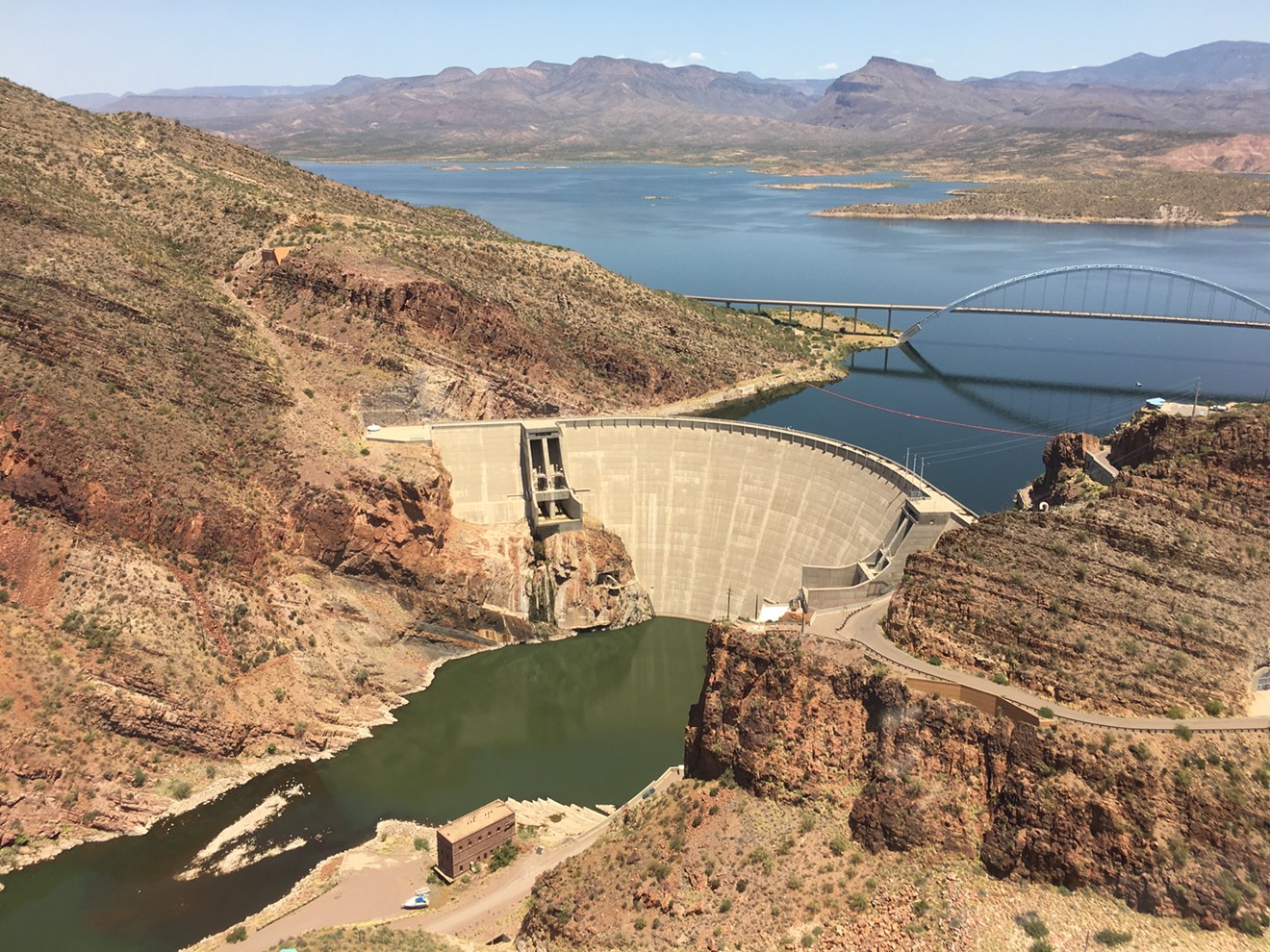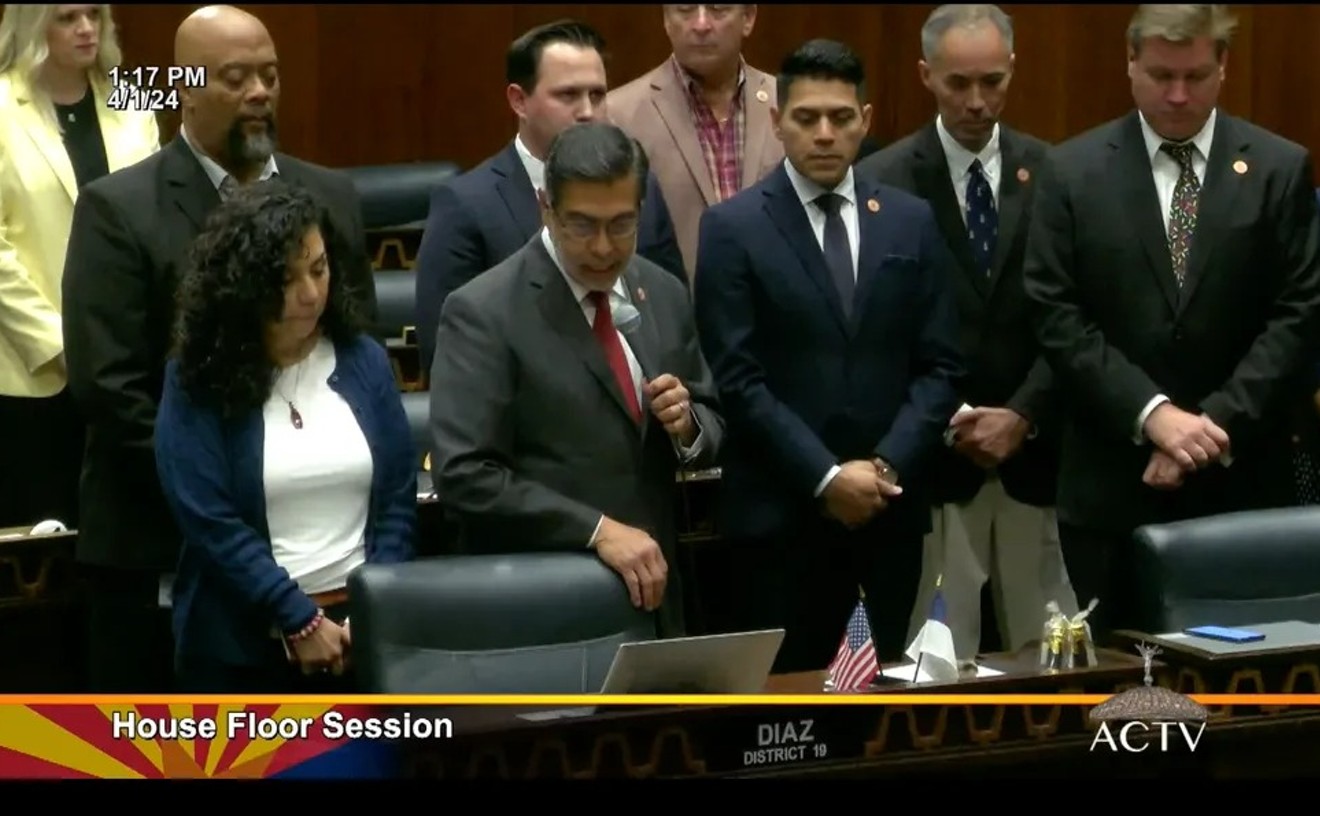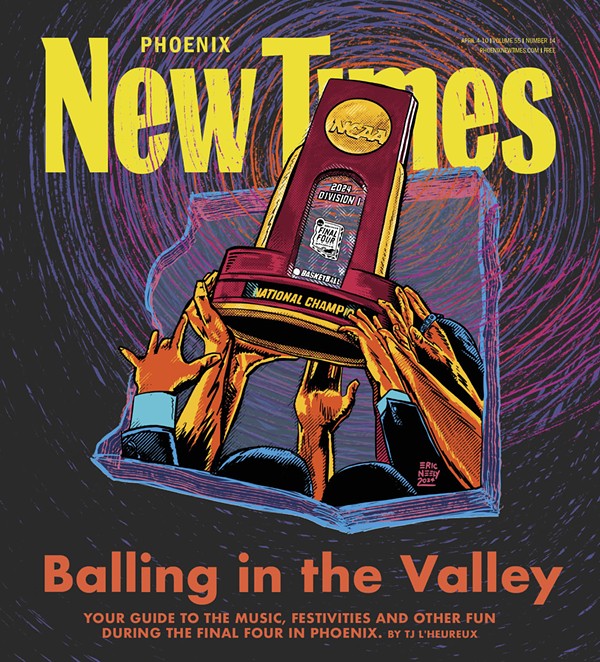Plenty of work is on the docket for 2020 and beyond to manage and preserve Arizona's water supply, even if that work might not write history the way last year's signing of the Drought Contingency Plan did.
"The reality [is] that everybody is going after the same limited supplies of water right now," said Sarah Porter, director of the Kyl Center for Water Policy at Arizona State University.
Or, in the words of Spencer Kamps, a lobbyist for the Home Builders Association of Central Arizona, everyone is "nibbling around the edges."
The state's water managers are known for prioritizing predictability and making careful, gradual changes, not erratic or sudden ones. Here are five key issues to watch this year in Arizona water.
1. Groundwater, Groundwater, Groundwater
Last year, the Arizona Department of Water Resources updated its groundwater model and discovered that Pinal County did not have enough groundwater to meet the legal requirements for dozens of planned developments. The shortage of about 8.1 million acre-feet will affect both agriculture and developers. On average, Phoenix households use about one-third of an acre-foot per year.
"The reality [is] that everybody is going after the same limited supplies of water right now." - Sarah Porter, ASU director of the Kyl Center for Water Policy
tweet this
"We're watching to see what will happen in the Pinal Active Management Area," said Warren Tenney, executive director of the nonprofit Arizona Municipal Water Users Association, referring to an area governed by the 1980 Groundwater Management Act.
From a regulatory perspective, the question now is how, if at all, these findings will affect groundwater rules in Pinal County, or if laws could even be changed. For homebuilders, developers, and farmers, it's about dealing with the gap between supply and demand.
“Right now, we’re focused on Pinal County,” said Kamps, the lobbyist for the Home Builders Association. “There are some possible short-term solutions that can kind of move the ball forward and assist with addressing some of the problems down there."
He declined to go into specifics, citing a lack of consensus among stakeholders, before adding, "I don't know what's ultimately going to be introduced as legislation."
Meanwhile, in rural parts of the state that do not fall under the 1980 law, which spells out careful protections for groundwater in Active Management Areas, mega-farms often owned by foreign companies plunder aquifers. Whether or not regulations will curb that free-for-all — and if so, when — remains to be seen, although several bills have already been introduced to require more monitoring of groundwater pumping.
2. The First Colorado River Cutbacks
We've entered Tier Zero, when the elevation of the reservoir Lake Mead drops below 1,090 feet above sea level.Lake Mead actually ended 2019 with its water above 1,090 feet above sea level, but the reservoir nonetheless entered Tier 0 because that designation depends on the projections of a 24-month study published in August, which predicted that at the end of 2019, Lake Mead would fall below 1,090 feet.
Under the Drought Contingency Plan, a seven-state plan spelling out tiers of cutbacks to each state depending on the capacity of Colorado River reservoirs, Arizona must leave 192,000 acre feet in Lake Mead this year.
That sounds like a lot, but it's not that much more than the 160,000 acre-feet the state voluntarily left in Lake Mead last year, an amount that has been growing since 2014. And by the state, we really mean the Central Arizona Project, the entity that operates the canal bringing Colorado River to central Arizona, whose users are the first to lose Colorado River water in times of shortage.
The loss of 192,000 acre-feet from the Colorado River means that, as in years past, there is no water to store underground, a practice known as banking water. There is also no water to replenish aquifers in Central Arizona.
And, the CAP water that goes to farmers is cut by 15 percent, said Chuck Cullom, manager of Colorado River programs for CAP.

Lake Mead, the Hoover Dam, and the famous "bathtub ring" showing dropping water levels, in March 2019
The fact that Arizona's Colorado River supply in 2020 is only 32,000 acre-feet less than its 2019 supply is a success, he added.
"We avoided a big disruptive cut," Cullom said. "Water managers don't like big change. We like incremental change."
With these cutbacks, prices will also go up, in order to cover fixed costs to operate and maintain the canal. This year, delivering an acre-foot of water will cost $3 more than it did last year.
Farmers in Pinal County are the first water-users in the state to feel the cuts. They are largely returning to groundwater, which requires significant investment to tap, while aiming to stave off stricter regulations.
"Farmers in the area have proposed an extensive plan for conservation and infrastructure funding needs to the Natural Resource Conservation Service," said Stefanie Smallhouse, president of the Arizona Farm Bureau. "We await news from that agency as to whether those efforts will be funded in the next few years."
"Agriculture leads the way in rural Arizona in water conservation and has for some time," she added. "We don’t need lawmakers to regulate water use, we need them to recognize and support current conservation efforts already in place."
3. Studying New Sources of Water
The time has not quite arrived for Arizona, whose population continues to grow at a fast pace, to need to desalinate ocean water or brackish groundwater, or to start using recycled water in their homes. Not yet."There's still quite a bit of give in the system," Porter said. "There are less-expensive options."
But both of those options are on the table for the future, which means that policymakers and Arizona water influencers are talking about them now. After all, these changes take years to pull together, and experts and policymakers, or at least the savvy ones, think about Arizona's water not just years but even decades in advance.
Late last year, the city of Scottsdale received the first-ever permit for a city to serve reclaimed water, which is effluent (yes, sewage) that has been treated to drinking-water standards. That limited permit, though, does not allow Scottsdale to distribute that water to customers — only to serve it at its facility.
The Arizona Department of Environmental Quality, which oversees the permitting to allow direct potable reuse, has said it will issue those permits on a case-by-case basis. It is also working on rulemaking to clarify the requirements for water operators who want to obtain the necessary permits.
"Lots of communities are looking at that and thinking about it as an option," Porter said.
Desalination, or extracting salts from briny water to make fresh water, is further out.
Theoretically, Arizona could desalinate seawater — options include the Pacific Ocean, the New River, or the Sea of Cortez — or brackish groundwater, but it's prohibitively expensive at this point. Also, figuring out what to do with leftover brine still poses problems.
A binational study with Mexico is ongoing, with a report likely coming out after 2020. The Governor's Water Augmentation, Innovation, and Conservation Council also has a desalination committee that is discussing options.
“We will keep moving toward both kinds of desalination, and as demand builds and the price of each of those makes sense, then we’ll see people moving toward it,” Porter said.
4. Colorado River: New Drama?
Last fall, the town of Queen Creek tried to buy Colorado River water from an investment company that owned property close to the river, in the Cibola Valley, generating fierce opposition from on-river communities. Residents there don't want their water going to the cities of central Arizona — not under this proposal, nor under previous ones.This year, the Arizona Department of Water Resources will send its recommendations on the proposed transfer to the federal government, the ultimate arbiter in a case that, if allowed to go through, could set a precedent for water transfers off the Colorado River.
“That’s the really big, brewing controversy: whether more water will be moved from the western Arizona communities and farms to serve water users in the CAP service territory,” Porter said.
This year, we are also unlikely to see any of the drama that accompanied the Drought Contingency Plan negotiations, even as the plan itself kicks in (see point number 2).
"It's going to be an interesting year from the standpoint of sorting out and working through all of the agreements, weaving the fabric of the agreements together in a coherent operating regime," said Cullom of the CAP.
Although the seven basin states that draw from the Colorado River will need to start renegotiating those guidelines again soon — the DCP expires in 2026 — the Bureau of Reclamation is kicking things off with a technical evaluation of river operations.
In fact, it's already begun working on it, according to spokesperson Patti Aaron. It'll look at reservoir elevations, operations, conservation, and their effects. There's no set due date.
"We're hoping it'll take about a year," Aaron said.
5. The General Stream Adjudications
If you have never heard of these or are immediately turned off by the very name, it's okay.These adjudications to determine who holds the rights to water in a river system have dragged on for nearly half a century, and they're so mind-bogglingly complex that even many people who would be directly affected by their outcomes haven't filed for claims.
Arizona has two general stream adjudications: the Little Colorado River system and the Gila River system. The adjudications began in the mid-1970s, and this year, there's talk in the Legislature of trying to speed them up.
Discussions have ranged from securing funding for a second Special Master and support staff (right now, there's one part-time Special Master) to more funding for the Arizona Department of Water Resources, which provides critical technical support for the adjudications.
"It's time to make the process happen faster," Porter said.
BONUS: A Few Words on Conservation
With this constant talk of drought and shortage, will Arizona see water rationing, a la California in 2015?For the most part, no, according to Porter. It does depend on where you live and who your water supplier is, but if you're one of several million people living in the Phoenix metro area, you're not at risk of being told to shower once a week and to cease watering the lawn altogether.
But — and this is important — you should still conserve water, and some methods of conservation are more sustainable than others.
"The conservation that we should all be doing is that sort of gradual adoption of efficiency that permanently frees up water supplies for another use," Porter explained. Think water-efficient appliances, or xeriscaping instead of lawns of thick grass.
"The temporary, drastic conservation that we saw in California? That's not really very helpful," she said.












